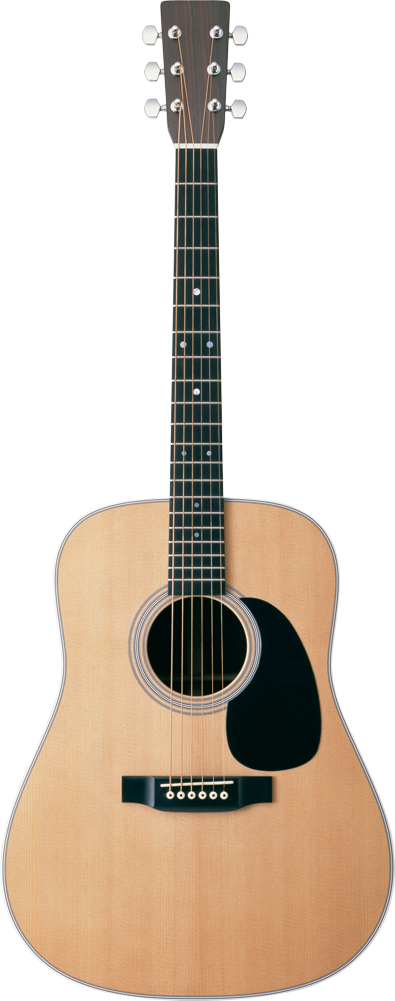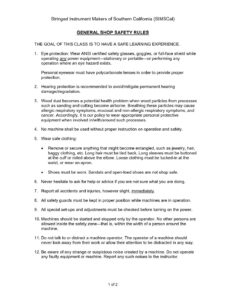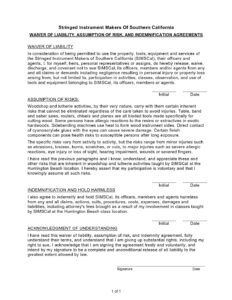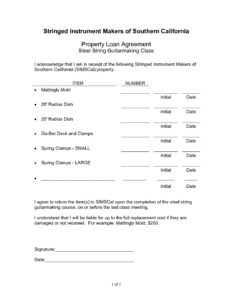Steel String Acoustic Guitarmaking Class

The class, at a glance:
Tuition Cost: $2,500 ($250 deposit due upon registration)
Additional Cost of Materials: Approx. $500 – $600
Class: 18 sessions, Saturdays 12:30 – 5:30 PM
Location: Huntington Beach, CA
Start Date: Late January/early February; contact instructor for details
Instructor: Larry McCutcheon
[email protected]
Introduction
If you want to learn how to make a flat top acoustic guitar, you’ve come to the right place.
This is not a kit assembly class; this is a make-it-from-scratch class. In this class each student will mill, drill, bend, plane, carve, route, saw, sand and glue in order to turn tonewood, bracewood, bindings, neck blank and purfling into either a Martin-style Dreadnought or OM (Orchestra Model), 14-fret, long scale acoustic guitar in the white.



Don’t be intimidated. Patience, a good eye and steady hand are more important than woodworking experience. You will learn guitarmaking skills while building a guitar. Even as first-time instrument builders, you will make a very respectable guitar.



The goal of the class is to teach you how to make a guitar by making an actual guitar. But for one thing – safety – class is fairly relaxed. Since the teachers are ardent guitarmakers themselves, “instruction” is more aptly put as “sharing what we know”; that is, not only what or how to do a thing, but also what to avoid.
A significant advantage of a live class is that there is someone to show you how to recover from a mishap, should one occur. “It’s wood. We can fix it,” is a class axiom.



A typical class begins with instruction on the building process du jour. Following that is a demonstration of that step, an opportunity to see – and ask questions about – the process just discussed. Then comes shop time; with guidance and coaching as necessary, it is time to put the day’s lesson into action.
Our process in a nutshell is to build the body first. Then the neck. Next, join the two together with a bolt-through floating tenon. Finally, “everything else”; bridge, saddle, nut, tuners and setup.



A guiding principle of this class is to prepare students to make their “next guitar.” Accordingly, this class provides more than just a recipe for “How To Make a Guitar,” it also provides the “Why” that informs the system that we use. In furtherance of the “next guitar” principle, we try to favor budget-friendly building methods suitable for a small/simple shop.



Details
- Tuition is $2,500. A $250 deposit reserves a spot in the class, the remainder is payable in three installments of $750 each. To pay your deposit (after speaking with the instructor), click here to visit our Class Payment Portal.
- Materials are the responsibility of the student. We will provide a list of items needed (see BILL OF MATERIALS below) and sources to get them.
- There are some small tools and consumables that would be useful to have. See SHORT LIST OF SMALL TOOLS below.
- There will be homework. It takes 100 to 120 hours, including instruction, for beginners to make a nice, but relatively unadorned guitar. Since we have 90 hours of scheduled instruction and shop time, some work outside class time will be necessary in order to complete the class on schedule.
- “In the white” is a term-of-art that means without finish. As there are so many finish options and constraints, we will only discuss finishes as part of this class. Finishing – the actual applying of finish – is beyond the scope of this course. That being said, options, pros & cons, suggestions and tips are part of that discussion. We want you to have a completed, finished instrument.
If you have any questions, drop me a line.
—Larry
Contact Instructor to Register
To register for our Steel String Acoustic Guitarmaking Class, please email the instructor, Larry McCutcheon, directly:
[email protected]
Provide your name, and an email address or phone number where you can be reached, and Larry will respond to your inquiry with details on class dates, workshop location, payment schedule, and more.
Pay Your Deposit
After speaking with the instructor to confirm there is an available spot for you in the class,
click here to visit our Class Payment Portal.

Meet the Instructor: Larry McCutcheon
Larry has been building guitars and ukuleles off-and-on for over 20 years. He studied guitar-building technique with Eric Nichols, SIMSCal’s former guitarmaking instructor and Director of Guitarmaking Operations. He has taught guitarmaking classes both “from a kit” and “from scratch,” and approaches the subject with an easy-going attitude. As he puts it, “Teaching is just sharing what you know.” Larry is a founding member of SIMSCal, and has served in various leadership roles within the club since 2004.
Reviews & Testimonials
A couple months after completing his dreadnought, Jake, a woodworking newbie, sent us this about his hand-made dreadnought:
“I think it sounds awesome! Seems to be opening up and sounds better than any D-18 or J-45 I’ve picked up at Guitar Center.” – Jake
About the class, he said:
“To anyone considering taking this course, this is the course you want to take if you’re interested in building acoustic guitars. These are the passionate people you want to be building alongside!” – Jake

Jake’s guitar
Richard, with a wide range of construction skills, had this to say:
“Larry and Fred are a very able and competent duo. When it comes to teaching this class, their combined knowledge is outstanding. If you have basic carpentry skills and the will to create your own acoustic guitar, this class is for you. The end result was a beautiful looking, great sounding legacy guitar. Thanks again for your patience, experience and professionalism.” – Richard

Richard’s guitar
Russ, a student builder and hobbyist making his second steel string guitar, offered this review:
“This class is a good beginning for anyone interested in guitar building methods, techniques and tool usage. The two instructors, Larry and Fred, were always ready with helpful suggestions as the process of building was underway.” – Russ

Russ’s guitar
Class Documents
The Bill of Materials and the Short List of Small Tools are useful for organizing the materials and tools you will need for the class.
Safety and Tools
- Safety
Safety is the number one concern in the workshop. Accordingly, there will be instruction on the proper use of all tools, including bandsaw, drill press, routers, and thickness sander, used in the class. Before starting, you will be required to sign a liability waiver. Students should always bring ear and eye protection, as well as a dust mask. No open toed footwear or loose clothing. - Tools
SIMSCal and/or the individual instructor will provide all of the specialty tools and fixtures necessary to complete your guitar. No tools will leave the workshop; students are not allowed to borrow tools to complete tasks outside of class. If additional shop time is needed, this can be arranged on a case-by-case basis with the instructor.
Fill out the following forms and return to the instructor, or bring on the first day of class.





